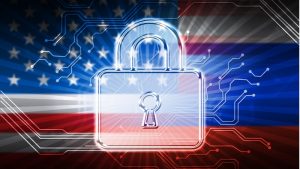Every year the National Association of State Chief Information Officers (NASCIO) releases its top 10 technology priorities. On May 28, NACIO released a white paper describing what it is calling the Four Forces Model. The Model highlights the forces – political forces, customer forces, market forces, and inertial forces – that impact how CIOs do […]
The Ohio Department of Transportation (ODOT) is responsible for maintaining one of the nation’s largest transportation systems, with infrastructure assets valued at more than $116B. Assets include 8,000+ lane miles, the second highest number of bridges of any state, and more than 680,000 additional assets beyond pavement and bridges – including waterways, public aviation facilities, and rail lines. More tonnage is moved through Ohio’s waterways than through the Panama Canal; and the state ranks third in the nation in terms of active rail lines.
As states shift their voting processes and procedures due to the COVID-19 pandemic, another element of the process for states has been subject to change—Federal funding, an inconsistency that has caused local election officials to adapt on the fly.
The Government Accountability Office (GAO) made several recommendations to the Office of Management and Budget (OMB) and others to improve coordination of cybersecurity requirements among Federal agencies to protect data shared with state government agencies.
Rep. Tim Ryan, D-Ohio, believes that the Federal government needs to help state and local governments figure out how to bridge the digital divide as the COVID-19 pandemic demonstrates a need to expand broadband to areas that don’t have it and to provide better services.
The Federal Communications Commission (FCC) announced May 21 it is partnering with the Institute of Museum and Library Services (IMLS) to promote the use of $50 million in funding from the Coronavirus Aid, Relief, and Economic Security (CARES) Act to help close the digital divide during the COVID-19 pandemic.
The Department of Health and Human Services (HHS) is considering a new approach to the Strategic National Stockpile, a “supply chain IT control tower” that would allow officials a full, comprehensive view of emergency supplies.
When the COVID-19 pandemic struck, many court systems nationwide had to stop proceedings. But, thanks to an investment in technology modernization, including a shift to Amazon Web Services (AWS) Cloud, the New Jersey Courts system was able to stay operational without interruption, even with 99 percent of its staff working from home.
As the COVID-19 coronavirus continues to change daily life, both the public and private sectors have stepped up with tech innovations to ease the transition and save lives. The speed of these innovations, however, seemingly outpace our ability to keep up with what new tech is available.
The Federal Communications Commission (FCC) announced May 14 that 774 broadband and telephone providers have agreed to extend the Keep Americans Connected Pledge through June 30 as the COVID-19 pandemic continues.













